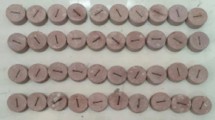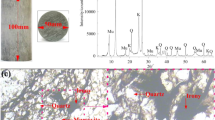Abstract
Results are presented from an experimental study of the effect of heating on the cleavage fracture of four explosive compounds based on hexogen and octogen. The loads that are critical in terms of collision velocity and pressure in the compressive loading pulse are determined. Macroscopic cleavage fracture of the specimens occurs above these loads. It is shown that the type and percentage content of the binder influence the paths of the temperature dependences of these loads.
Similar content being viewed by others
References
K. G. Hoge, “Dynamic tensile strength of explosive materials,” Explosivstoffe, No. 2, 39–41 (1970).
W. J. Murri, D. R. Curran, and L. Seaman, “Fracture model for high energy propellant,” Shock Waves in Condensed Matter. AIP Conf. Proc., 1981, No. 78, AIP, N. Y., pp. 460–464.
V. K. Golubev, S. A. Novikov, and Yu. S. Sobolev, “Effect of temperature on the cleavage fracture of polymeric materials,” Prikl. Mekh. Tekh. Fiz., No. 1, 143–150 (1982).
Additional information
All-Union Scientific Research Institute of Experimental Physics, 607200 Kremlev. Translated from Fizika Goreniya Vzryva, Vol. 31, No. 5, pp. 129–131, September–October, 1995. Original article submitted August 19, 1994.
Rights and permissions
About this article
Cite this article
Golubev, V.K., Novikov, S.A. & Sobolev, Y.S. Effect of heating on the cleavage fracture of certain explosive compounds. Combust Explos Shock Waves 31, 617–619 (1995). https://doi.org/10.1007/BF00743814
Received:
Issue Date:
DOI: https://doi.org/10.1007/BF00743814




